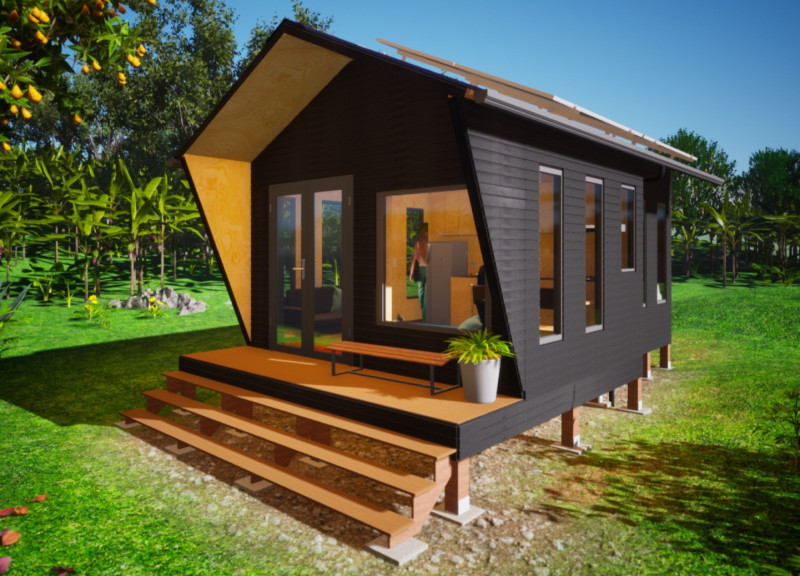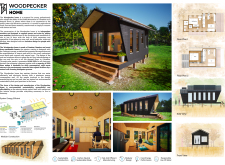5 key facts about this project
The Woodpecker home is designed for young professionals living in the Andes Mountains of Colombia. It aims to provide a solution for those residing in an area with limited access to public utilities such as water and electricity. The home accommodates various functions, from agricultural work to remote research and relaxation. The design centers on adaptability and modularity, allowing owners to customize their living experience as their needs change.
Modular Design
The structure consists of independent modules that can be easily expanded by adding new sections. This approach allows for flexibility, making it possible for residents to modify their homes over time as requirements evolve. The assembly is quick, as local carpenters and specialists are involved, promoting community contribution and skill sharing during the construction process.
Spatial Organization
Inside, the Woodpecker home features a well-organized layout that includes dedicated areas for storage, resting, working, and essential amenities like bathrooms and kitchens. The design takes accessibility into account, ensuring that people with disabilities can navigate and utilize the space comfortably.
Sustainability Practices
Sustainability is a significant focus in the design of the Woodpecker home. Solar panels are installed to generate electricity for everyday use, while a rainwater treatment system provides clean water for drinking and cooking. Additionally, a biodigester processes solid waste and converts it into organic fertilizer, promoting waste reduction and environmental responsibility.
Materials and Aesthetics
Guadua/Bamboo and sustainably sourced wood are the primary materials used in the construction. These choices reflect an emphasis on environmentally conscious building practices. The exterior is treated with a Yakisugi coating, a method that protects the wood from pests and decay through carbonization. Roof and window designs are crafted to optimize airflow and natural light, helping the home blend into its mountainous environment.
The combination of these design features creates a living space that meets practical needs while fostering a connection to the surrounding nature. The thoughtful integration of sustainability, accessibility, and modularity supports a modern lifestyle that is seamlessly integrated with the landscape.



















































